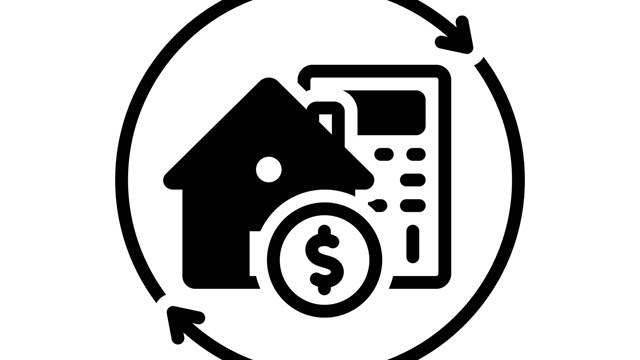In this challenging economy, many co-op and condo buildings are struggling to pay their bills while planning for future needs. Still, most building boards are loathe to raise maintenance fees or levy special assessments on their residents unless no other options exist. And while sometimes a fee increase is inevitable (and may even be long overdue), often there are other ways for buildings to increase their revenues. Knowing when to do one, or the other, is a matter of prudent planning.
Some of these alternative sources of funding—such as allowing advertising space to be leased on a building’s facade—are fairly obvious. But others are less apparent, which is why it’s smart for a board to involve professional consultants in such matters.
Raising Cash
When a community is strapped for cash, it can be tempting for a board to create new fees, raise maintenance fees, or enact special assessments. It might seem like the path of least resistance—money is needed ASAP, and raising a fee might seem to take care of the need. But often such moves are contentious and sometimes they require a vote of the board of directors, which doesn’t always end in unanimity. Whether or not such a vote is successful, it is a short-term fix at best to what could be a chronic cash flow problem. Other solutions are needed.
Some of the most common avenues of revenue generation in co-op/condo buildings include renting the building’s exterior spaces out to advertisers, or putting telecommunication booster antennas on the building’s roof. That’s fine, for buildings blessed with the physical space to allow such advertising. In such cases, a building’s board might want to consider if they can fit more antennas on the roof if they already have some, or to allow more advertising.
“Buildings should investigate what the opportunities are for their roof,” says Annette Murray, a CPA and shareholder with Wilkin & Guttenplan, PC, a New York accounting firm. “They could have air rights for the space above the building.” The board of directors could contact Verizon, Sprint or other telecom carriers to gauge interest in the building’s rooftop. Such a cell phone carrier might do a survey of the roof and make a proposal to the board to erect an antenna on it.
Use What You Have
But other, less invasive approaches to bringing in new revenue could be possible, such as making the most of the usable space in the building. For those buildings that have them, community rooms also can be a possible revenue source. If the community is not allowing the room to be rented to people outside the building, they might want to consider doing so—and charging a premium for it. Some charge as much as $500 per night for their space to be used for meetings, club functions, receptions, and other such events.
Or maybe the structure has a lot of unused basement space, which could be used constructively. That space might possibly be built out with storage lockers, each of which would be leased, says Jeffrey Bookman, principal of Somerset Investors, a Great Neck, New York-based real estate investment firm. The building could have this work done by contractors and then manage the new facility, or it could have a vendor such as Bargold Storage take care of the entire job. With no upfront investment, a co-op or condo might be able to use some unused space for storage and have it built out as needed by a vendor. Either way, revenues from lease fees could be quite helpful to the community.
Depending upon the community and the need, raising revenues also could involve changing the rules a bit. “Obviously, if you can do anything commercial, like a cell tower, that’s fabulous,” says Carl Cesarano, a principal of Cesarano & Khan, P.C., a Floral Park, New York certified public accounting firm. “You could allow subletting, and charge fees for those who do sublet.”
If a community were to begin to allow subletting and charge unit owners for the right to do so, that charge could be a flat fee, or a rate based upon the rental income that would be brought in through the subletting. The community could charge just an extra month’s rent to the unit owner, or a percentage fee, perhaps 15 percent of the monthly rental rate of the sublet, Cesarano says.
But subletting fees could be much more comprehensive—the board might charge a fee to the unit owner for the right to allow the board to consider and approve or reject the prospective subletting tenant. Such charges aren’t always well-received, but they make sense for some buildings because they raise fees through select groups, rather than through every resident.
Another relatively simple way to raise income for the community without burdening all of the residents is by enacting a “flip tax” or transfer fee, which is paid when an apartment is sold. Transfer fees can be a percentage of the apartment sale price; they could be a fixed amount per share; or the fee might be a percentage of the profit gained from the sale of the apartment.
For new and old tenants moving into or vacating a unit, move-in and move-out fees can be charged, Bookman says. “I guess the notion is that you could cause damage in the move—sometimes these fees are refundable, others are not and are based on the notion that there are increased costs when people come in and out of a building,” he says, noting that such fees often range from $500 to $1,000.
Some innovative ways buildings have raised money include renting out their spaces for movie/commercial /photographic shoots. The right kind of building might be needed for such a project, but a building’s management cannot know if their building is right, if they don’t ask around.
“I’ve had some clients that have leased space in their building for a movie,” Murray says. “But there are some headaches that go with that. You have to weigh the potential money with how much it will inconvenience residents.”
Charging fees for pets living in residences also is another way to raise revenues. Dog fees might include an initial $1,000 registration fee and an annual fee of $100 to keep the dog registered and legally living in the building.
Working Together
So is it the manager’s responsibility to try to improve a building’s financial picture, or the board’s? The answer is, the task is the responsibility of both.
“It’s a team approach—we’re talking the board, attorney and accountant,” Cesarano says. “We’re fiduciaries, we’re running a corporation. We have to make the company financially viable.”
Boards and management of residential buildings should work together to identify opportunities to raise more income for the community. First, they should look at all of the building’s expenses and revenues. Next, the group should consider how much funding is needed to handle all of the building’s expenses, including deposits into its capital improvements fund.
The board, management and the building’s accountant can collaborate on this task. They should ask, what are the building’s maintenance costs? Are the maintenance fees keeping pace with the costs, or could the building be running a loss with its maintenance program? Since maintenance is not a static fee, and residents can expect it to increase, hiking such fees is completely reasonable when it’s justifiable. If the building’s management team asks around regarding fee rates of buildings in their neighborhood, they could find that they are undercutting themselves by not charging enough in routine maintenance fees.
If the building’s laundry room is managed by an outside vendor, is the building charging enough? Does the building have a good contract? “They should revisit that,” Murray says.
And for buildings that have a gym, fees should be scrutinized to ensure they keep up with costs and remain competitive. Such a tweak might amount to a fee increase of $400 per apartment yearly. Similarly, parking fees might be tweaked to raise some revenue.
Pushback
Depending upon the demographics of a building, though, raising fees could be especially tough on residents. In the case of very small co-op buildings—those with around a dozen units—it can be a challenge to increase revenue without raising maintenance, experts say.
“A building with a smaller number of units does have a harder time raising revenue, because you have a smaller population to spread the costs to,” Murray says, noting that simply collecting all fees in a timely manner can help a building get on better fiscal footing. “The board should have a collection policy that the management company enforces. Delinquent fees should be managed very carefully.”
Boards in self-managed buildings can identify and implement revenue generating programs without guidance, if needed. The Community Associations Institute (CAI), a nationwide co-op, condo and HOA resource organization, The Cooperator and its The Cooperator Expo, and other resident-focused organizations provide much-needed resources for boards.
But if big money is needed by the community—for perhaps, reconstructing a roof or another major project, the management team should consider lines of financing for the funding. And they also should consider, again, where they might cut funding.
Of course, shareholders have some say in how their building makes money. While they may not have the right to veto a commercial tenant, or be able to vote against putting signage on the building, they do vote for board members as their elected representatives. Board members can be voted out of office, or in some rare cases, special elections can be called to have board members removed from office before their terms expire.
Perhaps the best policy, though, is for residents to elect good board members who connect themselves with astute accountants, property managers and other smart money managers.
“Cutting expenses is just as good as finding another source of funding,” Murray says. “Bring in an energy consultant to assess the building’s use.”
Jonathan Barnes is a freelance writer and a frequent contributor to The Cooperator and other publications.







Leave a Comment